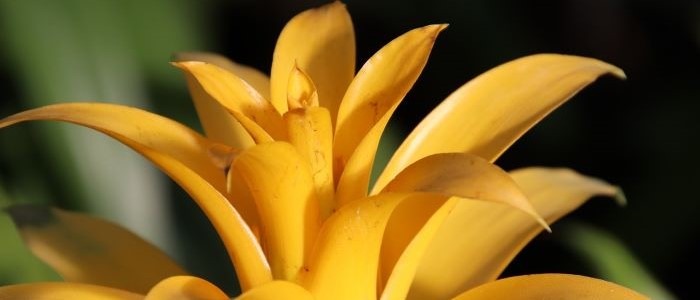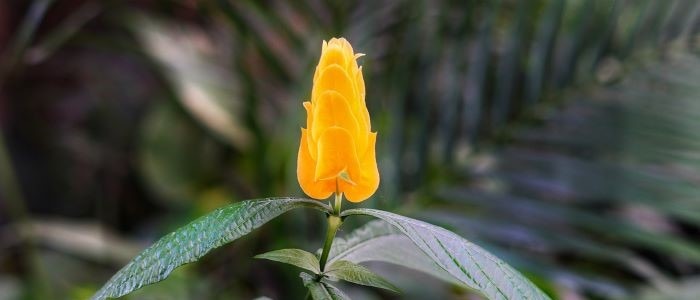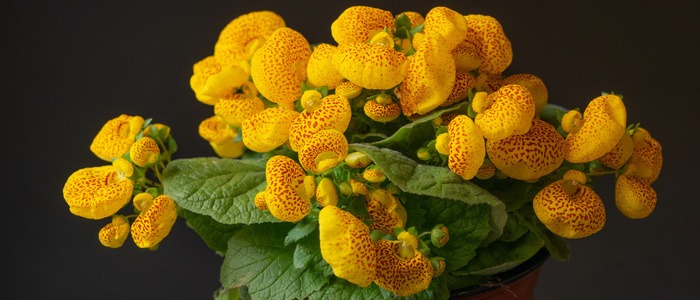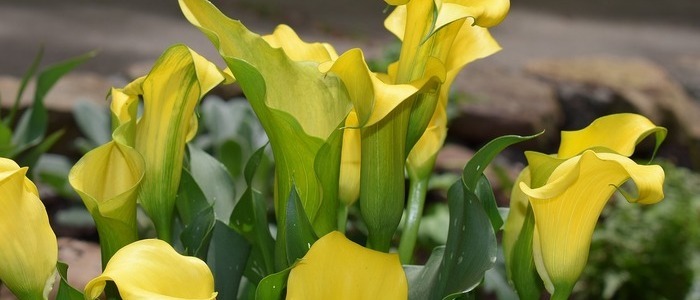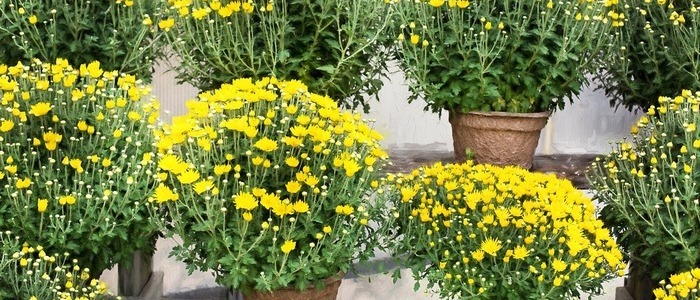If you have never heard of the Tuberous Begonia plant, you’re in for a treat! The flower colors and shapes of this plant are breathtaking! These beauties are great for brightening up shady areas of the garden. While they’re not hardy in places like Minnesota, you can grow them as an annual and overwinter the tubers indoors. Tuberous begonias have large, attractive flowers, which may be plain or have margins, crests, or even contrasting colors.
The tuber of a tuberous Begonia grows bigger and larger each year. However, the plant will start to lose vigour when it reaches the age of four or five. To prolong the life of your tuberous Begonia, you can use cuttings from the tuber of another plant. Cuttings will form new tubers the following year.
The flowerheads of tuberous begonias are divided into different types based on their flower shapes. Large-flowered standards, also called queens, are the standard of the tuberous begonias. The smaller female flowers, known as tuberculate, are the “fascination begonia” and feature marbled petals. Other varieties include Bicolor and Camellia varieties and rose-shaped flowers and ruffles.
The tuberous Begonia can last for several months indoors in a pot. You can move them outside after the danger of frost has passed.
Tuberous Begonia Frequently Asked Questions
Do tuberous begonias like sun or shade?
Tuberous Begonias prefer shade so plant them in well-drained soil away from direct sunlight however for these Begonias to thrive you need to ensure that there is a good source of indirect light.
Is yellow begonia a perennial?
The yellow Begonia is a perennial with large, attractive rose-like flowers, which may be plain or have margins, crests, or even contrasting colors. Once removed from direct light, this remarkable flower thrives and blooms all summer.
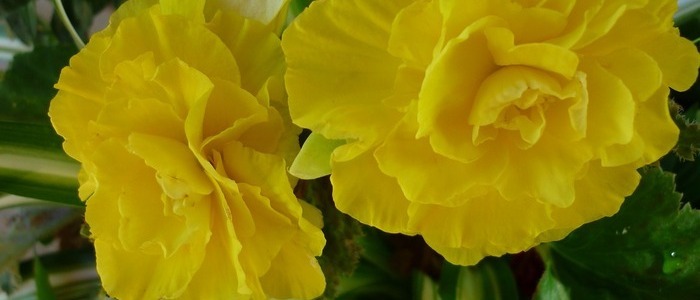
How to Care For Tuberous Begonia Plants
If you’re wondering how to care for tuberous begonias, you’ve come to the right place. These beautiful plants are relatively trouble-free. The most common disease affecting them is powdery mildew, but that prevalence is reducing yearly due to improved control materials and the development of new, more resistant varieties. To prevent it from becoming a problem, apply a mild fungicide monthly to the plants, and reapply it if necessary.
Plant your tuberous begonia in well-drained soil with at least half its depth for the best results. Because tuberous begonias are not drought-tolerant, make sure that you keep the soil evenly moist between waterings. To provide adequate drainage, use moss-lined wire hanging baskets. Tuberous begonias require a balanced fertilizer every three to four months.
To maintain a healthy plant, prune the rhizomatous variety after its first flowers have emerged. For a healthy plant, prune the young stems to one or two nodes above the soil. Then, repot the tuberous begonia plant into a bigger pot if it’s ready. You can also pinch off the young stems to promote larger flowers. You can also move your plant to a brighter location and add supplemental lighting.
If you live in a zone with freezing temperatures, tuberous begonias need to be brought indoors during the winter. Move tubers from pots before the first killing frost. Once you’ve cut back the stems, allow the tubers to become dormant. If you don’t have any frost, they can be stored indoors in a dry peat moss bag. During the winter months, you can replant the tubers. Then, you can force blooms in spring by planting them again.
To save your tuberous Begonia tubers, dig them up before the first frost. Don’t let them freeze, because they won’t survive the winter. Once the first frost has passed, carefully remove the tubers from their containers and store them in a dark, cool location until spring.
Propagating Tuberous Begonia Plants
There are several methods for propagating tuberous begonia plants. One method involves cutting the tubers into sections. This method works great for growing new plants, but it is not the most efficient. The best way to multiply stock is to use supplementary lighting. But, be aware of the following two common mistakes that can make the process more difficult. In any case, be sure to follow the instructions carefully. After all, tubers should be kept moist and well-drained.
Cuttings of tuberous begonias should have one main stem. The stem should have no bloom scars or nodes. If the stem does not have bloom scars, the cutting should not be a good one. However, it is an ideal cutting if the stem has new growth. Another type of cutting is the rhizome. Rhizomes are shorter than stems, so you can prune them to any length you wish. Cuttings of this type will produce new plants more quickly and with greater success.
Propagating tuberous begonia plants can be quite simple. You can use cuttings from the stem or leaf, and transplant them into a container. Depending on the variety, you can take different types of cuttings. Tips are easiest to root, and you can follow the same instructions for cuttings of rhizomes. Stem cuttings should be trimmed off in small sections. You can also use leaves to propagate begonia plants.
How to Prune Tuberous Begonia
For your tuberous begonia plant to thrive, you will need to know how to prune it properly. This low-maintenance plant will bloom throughout the year if grown in warmer climates. In colder climates, begonias may be brought indoors and cared for just like houseplants and will need to be pruned in the fall. Begonias should be pruned by pinching off the excess stems and forcing them to branch at their pinch point. Deadheading is not necessary since the plant will self-clean itself.
This plant has two types of buds: lateral buds and tip buds. While lateral buds are often removed, tip buds are kept, which direct the plant’s energy toward one flower. Male buds will produce larger blooms than female ones. Whether you prune them based on size or color is up to you, but remember that the plant’s growth rate is influenced by temperature and light levels. Make sure that your tuberous begonia gets enough sunlight to grow healthily.
When the leaves begin to yellow, remove the plants and store them indoors in a cool place, away from direct sunlight. After the foliage dies back, you can replant the tubers to force flowering in the spring. You can also store the tubers for next year by replanting them when the danger of frost is over. Just be sure to keep the soil dry between watering to prevent rot.
Common Problems With the Tuberous Begonia
Common problems with the tuberous begonia include overwatering, wilting leaves, and sun damage. To help prevent the yellowing of your tuberous begonia, reduce the amount of watering it receives and move it away from bright light. When watering, keep the soil moist but not soggy. In a sunny location, place the plant in partial shade to allow it to get enough water.
When watering tuberous begonias, make sure the soil is aerated and loose. Regularly check soil moisture levels and water only when needed. Avoid overwatering the plant or it will suffer from stem rot. Excessive watering can also result in brown, wilted leaves, and rotted roots. To prevent this, water the soil only when necessary. Do not over-water the plant, as too much water will cause it to wilt or die.
One common problem with tuberous begonias is bacterial leaf spot, which causes the outer leaves to yellow and eventually collapse. This fungus can kill the entire plant. However, if you treat it immediately, the infection can be controlled. The fungus may also cause other problems, such as rust, powdery mildew, and leaf spot disease.
Watering a tuberous begonia requires a combination of moist and dry soil. Avoid overwatering as this may result in waterlogging and tuber rot. It is also important to keep the soil moist but not too dry, as this can result in the leaves wilting. Lastly, watering the tuberous begonia properly will help it grow at the proper temperature. Begonias like warm temperatures, but cannot tolerate high temperatures.
Yellow Houseplants Other Than the Tuberous Begonia

